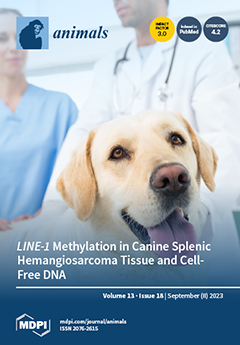The objectives of the study were to screen one or several Chinese herbal extracts with good ammonia emission reduction effects using an in vitro gas production study. The study consisted of a control (without Chinese herbal extract), and 11 experimental groups with added cinnamon extract (CE), Osmanthus extract (OE), tangerine peel extract (TPE), dandelion extract (DE), Coptis chinensis extract (CCE), honeysuckle extract (HE), Pulsatilla root extract (PRE), yucca extract (YE), licorice extract (LE), Ginkgo biloba extract (GBE), or astragalus extract (AE). The results showed that HE, PRE, YE, LE, GBE, and AE significantly reduced ammonia production (
p ≤ 0.05). The most significant ammonia inhibition was achieved via AE, resulting in a 26.76% reduction. In all treatments, Chinese herbal extracts had no significant effect on pH, conductivity, or uric acid, urea, and nitrate-nitrogen concentrations (
p > 0.05). However, AE significantly reduced urease activity and the relative activity of uricase (
p ≤ 0.05). AE significantly increased the relative abundance of
Bacteroides and decreased the relative abundance of
Clostridium,
Desulfovibrio, and
Prevotell (
p ≤ 0.05). Astragalus extract inhibited ammonia emission from laying hens by changing the gut microbial community structure, reducing the relative abundance of ammonia-producing bacteria, and reducing microorganisms’ uricase and urease activities.
Full article






